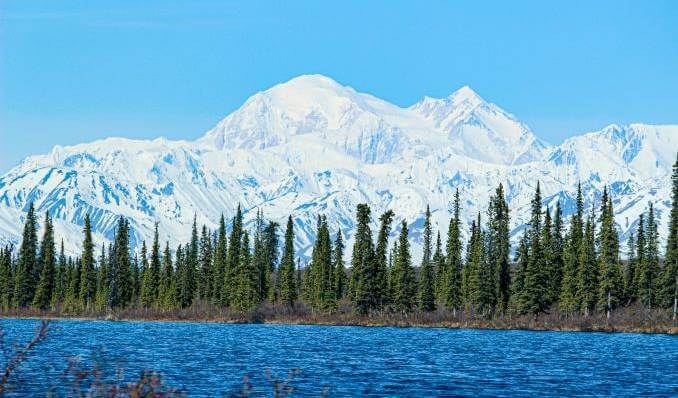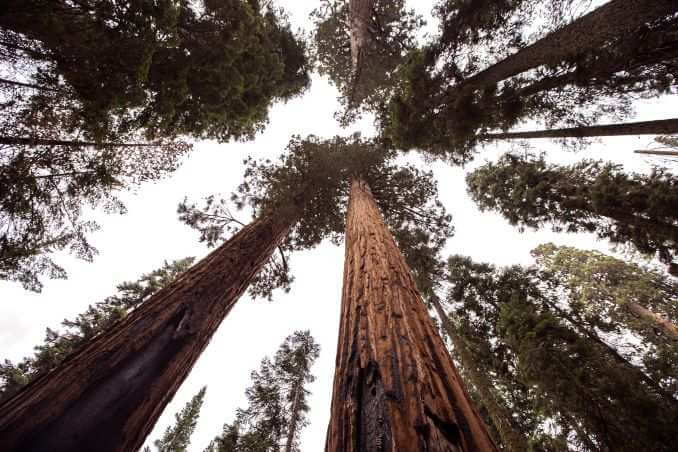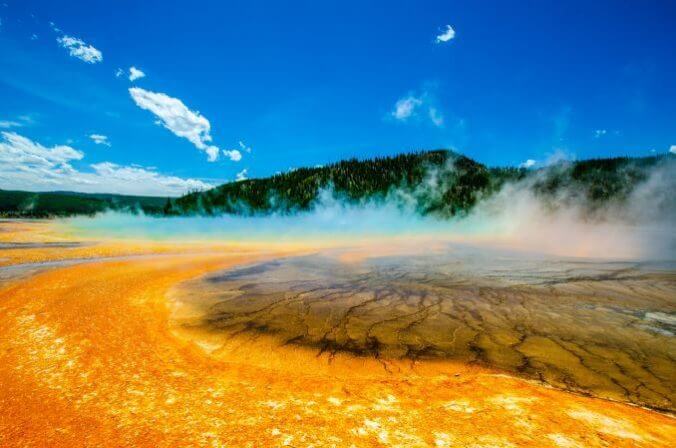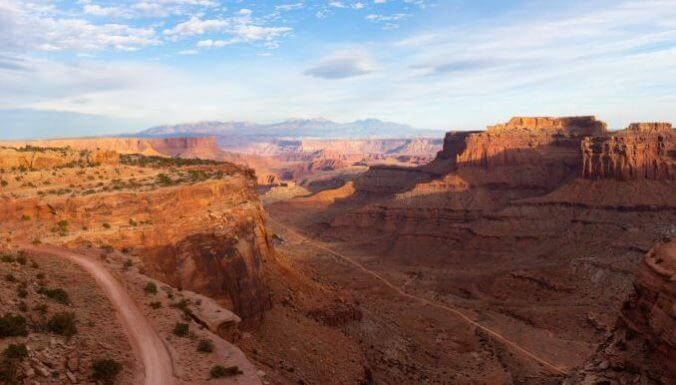The 20 Best National Parks in America
All photos from Unsplash
America invented the national park when it made Yellowstone the world’s first in 1873, introducing the idea that “extraordinary” land should be protected from public development and preserved for future generations. After visiting half of the country’s 63 National Parks, it’s obvious some are better than others. A handful of recent ones (Cuyahoga Valley, Indiana Dunes) seem downright ordinary, if not political, when compared to less prestigious but clearly superior state parks like Na Pali or Custer.
With nine total, California has the most National Parks, followed by Alaska with eight, and Utah with five. In fact, the western United States is home to over 80% of National Parks, even though just a quarter of the population lives there. This explains why The Great Smoky Mountains in Tennessee welcomes the most visitors, over 14 million annually, compared to Zion’s 5 million, the second most.
Wherever you go, if you only see 20 in your lifetime, make it these icons.
20. Rocky Mountain

A “mini” Torres del Paine. That’s how I originally described Rocky Mountain National Park in Colorado after first visiting it. Whatever it is, you’d be hard-pressed to find a more majestic mountain range with more teal alpine lakes than here. Situated near the picture-perfect town of Estes Park, Rocky Mountain is the total package, even if it’s difficult to name a single feature like other parks on this list.
Best hike: Emerald Lake Trail (3 miles)
19. Acadia

Many people argue this is the most beautiful National Park (if not coastline) on the eastern half of America. That is a sound argument, especially when the leaves turn in autumn, which is one of the most stunning displays of nature in all of North America. Located on an island in southern Maine, Acadia is landscaped by woodland, rocky beaches and glacier-forged granite peaks such as Cadillac Mountain, the highest point on the East Coast.
Best hike: Beehive Trail (1.5 miles)
18. Death Valley

Welcome to the lowest and hottest place on Earth. But don’t go to California’s Death Valley for the notoriety. Go because it’s hauntingly apocalyptic and arguably better than two of America’s other sand dune national parks (Great Sand Dunes and White Sands). Here there’s a ghost town, salt flats, and soaring Sierra Nevadas in the background. Oh, and Star Wars was filmed here, which is why you’ve already seen it.
Best hike: Mosaic Canyon (3 miles)
17. Grand Teton

“Grand Tetons” means “big nipples” in French, who gave the mountain range its modern name after first seeing its now famous twin peaks. Bordering Yellowstone in Western Wyoming, Grand Teton is also known for Jackson Hole valley, mountaineering, and the picturesque Jenny Lake. Like Rocky Mountain National Park, this too reminds me of Patagonia, especially while driving the Rockefeller Memorial Parkway.
Best hike: Cascade Canyon (9 miles)
16. Badlands

When Native Americans used to escort settlers and the U.S. military through South Dakota, they wouldn’t dare venture into this place. “Bad lands” they called it, for its sick-looking layered rocks, steep canyons, and towering spires. When coupled with the sprawling grasslands that surround both the rocks and entire park, the views are bewitching and best viewed along The Badlands Loop Road (Highway 240).
Best hike: Notch Trail (pictured, 1.5 miles)
15. Glacier Bay

When someone says they saw glaciers on an Alaskan cruise, this is almost always the place they’re referring to. Cruise ships pull right up, and there it is: Margerie Glacier, one of the largest terminal glaciers in North America. It’s also mesmerizing. If you’re one of the lucky few to explore the park while not on a cruise ship, halibut fishing, Bartlet River Trail, the intertidal zone, and kayaking rank high on the list.
Best hike: Forest Trail (1 mile)
14. Olympic

On a foggy day—which it usually is—this place is eerie. Located on the most northwestern corner of America and taking up the entirety of Washington’s Olympic Peninsula, this namesake park features dramatic peaks, old-growth rainforests, and timeless coastline with heavy Oregon vibes. Glacier-clad Mt. Olympus is popular with climbers, as are hiking and backpacking trails. Although alluring, Olympic demands a lot of driving to get around.
Best hike: Mount Storm King (4 miles)
13. Denali

That’s a big mountain. Formerly known as Mount McKinley, Denali is the tallest peak in North America. It’s not just tall, though—it’s massive. Covering 6 million acres in south central Alaska, the park is too—nearly three times the size of Yellowstone. Chock full of glaciers, tundra, and spruce forest, Denali (meaning “the great one”) is home to grizzlies, wolves, moose, and caribou. In the summer, most people go for the biking, backpacking, climbing, and hiking.
Best hike: Mount Healy (hard 7 miles) or Horseshoe Lake (easy 2 miles)
12. Sequoia

Like another park on this list, you have to climb several switchbacks by car to reach the park. This makes for a dramatic experience while seeing the widest trees on Earth, first starting with mostly mountain pines and then… BAM—you are suddenly surrounded by the Giant Forest of sequoia trees. General Sherman, the largest of these trees, is the centerpiece, but Crystal Cave, Moro Rock and nearby Tunnel Tree are also popular attractions in this eastern California park.
Best hike: General Sherman and Congress Trails (4 miles combined)
11. Crater Lake

You will never see a bluer lake in your life. Formed by a now-collapsed volcano, Oregon’s Crater Lake is the cleanest and clearest lake on the planet and reflects an insane amount of royal blue atmosphere. At 2000 feet deep, it’s also the deepest lake in America. Wizard Island adds to the circular majesty that’s best seen from The Rim Drive, The Crater Lake Lodge, or the fantastic Garfield Peak Trail (3.5 miles). Cold but swimmable, Crater Lake is easily one of the most gorgeous places I’ve ever seen.
Best hike: Cleetwood Cove (2 miles)
10. Arches

Like Sequoia National Park, you can’t see Arches from the approaching highway. You have to drive up to it with a series of switchbacks. But once you get to the top, oh my! Arguably the most vehicle-friendly National Park (if not inspiration for Disneyland’s Radiator Springs), this Utah icon is filled with 2,000 sandstone arches carved by 65 million years of wind. Highlights include Park Avenue, Fiery Furnace, Devil’s Garden, and Balanced Rock, all of which are easily accessed by basically a single road. In truth, Arches could fit anywhere in the top 10—it’s that good.
Best hike: Delicate Arch (3 miles)
-

-

-

-

-

-

-

-

-

-

-

-

-

-

-

-

-

-

-

-

-

-

-

-

-

-

-

-

-

-

-

-

-

-

-

-

-

-

-

-

















































